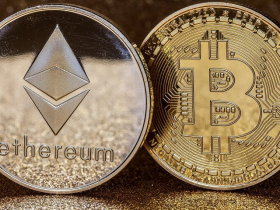The price of bitcoin is determined by supply and demand in the market. More vendors usually translate into lower prices, or vice versa.
In what way is Bitcoin priced?
In contrast to fiat currencies like the US dollar, the British pound, the euro, and the Japanese yen, Bitcoin (BTC) is a cryptocurrency that is not issued by any government or legal entity. Cryptographic techniques and a distributed user network are needed in order to produce, store, and transfer Bitcoin.
Rather than utilizing a middleman, investors conduct their business dealings directly. Trade barriers are lifted and commerce is streamlined by the peer-to-peer Bitcoin network. The first cryptocurrency in history was suggested by Satoshi Nakamoto in 2008 and released in January 2009.
The usability and perceived worth of Bitcoin are influenced by the amount of businesses who accept it. Nevertheless, there has been a lot of volatility in its price, which has resulted in quick price swings. These factors include investor mood, media coverage, and regulatory news. Even during its peak of popularity, it can be difficult to discover clear answers to frequently asked topics, including how much Bitcoin costs. The price of Bitcoin is set by who? Does Bitcoin have inherent worth, too?
The price of Bitcoin is determined by the same supply and demand market dynamics that impact the pricing of other commodities and services. If there are more buyers than sellers, or vice versa, prices will almost certainly increase. It’s also critical to remember that neither the price of Bitcoin nor its trading occurs in a single place, like a stock exchange.
Rather, supply and demand as well as other elements like new improvements in technology, security, and regulations impact each market’s or exchange’s price.
What Variables Might Affect the Price of Bitcoin?
The supply and demand of Bitcoin, competition from other cryptocurrencies, news, production costs, and regulations are some of the variables that affect its price.
The Relationship Between Supply and Demand
The law of supply and demand, which argues that market forces combine to determine the market price and quantity of a particular item, is well-known to those with an economics background. For example, as an economic good’s price rises and sellers increase production, the demand for the good decreases, and vice versa.
The basic economic idea of supply and demand is very important in determining how much Bitcoin is worth. Due to a hard cap of 21 million coins, Bitcoin is becoming a scarce digital money. Once that cap is reached, miners will no longer be rewarded with fresh Bitcoin for validating transactions.
Similar to this, every four years (roughly), an event known as the Bitcoin halving reduces the amount of new Bitcoin that is added to the market by half the incentive for mining new blocks. Prices for Bitcoin may rise if demand stays the same or rises while supply growth slows.
Competition and News
Bitcoin faces competition from a wide range of competing cryptocurrencies, like Dogecoin (DOGE) and Ether (ETH), each of which has special qualities that draw attention from investors. Furthermore, investor sentiment can be greatly influenced by news and media coverage, which can cause price volatility depending on opinions about Bitcoin’s prospects for the future.
Production Expenses
In addition to direct costs like as infrastructure and electricity for miners, the cost of creating Bitcoin also includes indirect costs associated with the difficulty of the cryptographic puzzles that miners must solve. These expenses help miners determine a starting point, or “break-even” point, which influences the lowest price at which mining Bitcoin may be deemed financially feasible.
In the context of Bitcoin mining, this break-even point—also known as the “floor price”—refers to the lowest price at which mining Bitcoin can be viable while taking operational costs into account.
Furthermore, the Bitcoin network modifies the complexity of its cryptographic puzzles based on the total amount of processing power, which affects the rate at which new Bitcoin are created. These modifications have the potential to slow down or speed up the creation of Bitcoin, which will have an impact on the total supply and, in turn, the market price.
Regulation
Regulations around cryptocurrencies are always changing. Some nations, like El Salvador, which made Bitcoin legal tender in 2021, are supportive of cryptocurrencies, while others, like China, which outlawed cryptocurrency transactions in 2019 for official reasons, are not. The dynamics of the Bitcoin market can be greatly impacted by regulatory developments, which could lead to uncertainty and lower or higher prices.
The introduction of restrictive measures by government has the potential to depress the price of Bitcoin. On the other hand, governmental moves that improve accessibility to the market—such as legalizing spot Bitcoin exchange-traded funds (ETFs) in the US and bolstering security measures—can encourage increased market participation and even raise the price of Bitcoin.
How Far can Bitcoin Really Rise?
A wide range of forecasts and conjecture surround the possible future price of Bitcoin. These are impacted by factors that can change the course of its price, including market acceptance, legislative changes, technological developments within the blockchain ecosystem, and general economic conditions.
Market acceptability is crucial because increased acceptance of Bitcoin for transactions and investments can boost demand. Regulatory measures by governments and financial institutions around the world can either facilitate or impede the expansion of Bitcoin, depending on whether they place limitations or provide consumers with security and clarity.
If technological developments improve Bitcoin’s scalability, security, and use cases, they might boost its value. Furthermore, macroeconomic factors like inflation rates, currency devaluations, and investor sentiment toward traditional and digital assets may have an effect on how appealing Bitcoin is as an investment.
An other factor to take into account is the increasing recognition of Bitcoin as a “digital gold,” which will eventually propel it in the direction of becoming a safe-haven asset and a store of value. Given that Bitcoin is a digital asset with a limited supply, this comparison not only highlights its potential as a buffer against economic instability but also highlights its unique benefits over traditional assets like gold.
It is difficult to forecast a precise value that Bitcoin may attain in light of these factors. Historical patterns have shown significant volatility, with periods of rapid price increases interspersed with corrections. Bitcoin’s future acceptance and growth trajectory can be predicted using the technology adoption S-curve paradigm. According to this model, Bitcoin will probably become more widely accepted as it develops and overcomes its early adoption obstacles, following the same trajectory as earlier revolutionary innovations.
But as was already mentioned, there is a lot of speculation about the potential upper limit of Bitcoin’s price, and it depends on future developments. As with any investment, potential earnings are not guaranteed, thus caution should be exercised when making predictions about the future fluctuations in the price of bitcoin.











Leave a Reply